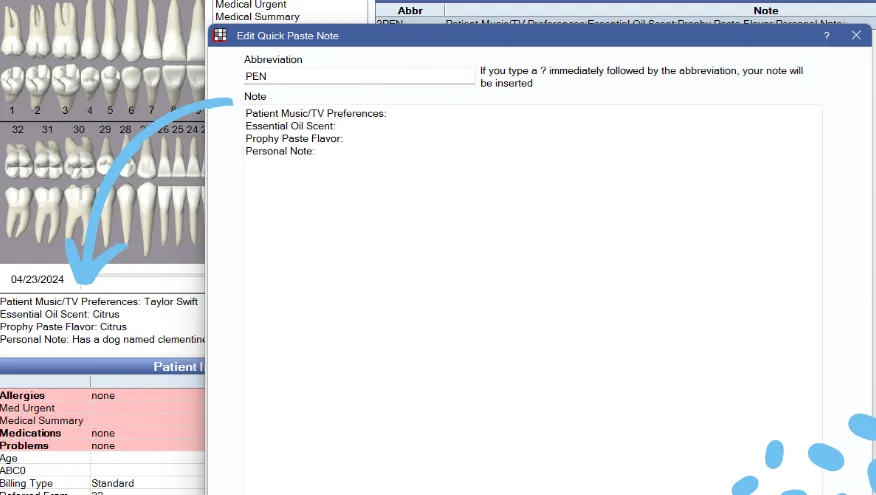Expert Insights for Your Dental Practice
Stay Ahead with Our Knowledge Hub:
Dive into valuable tips, expert advice, and the latest trends to elevate your practice.

Dental Insurance: The Patient POV
Dental Insurance: The Patient POV
A few weeks ago, I was chatting with my aunt and uncle about which dental insurance they should get for an All-on-4 case. This led us into a whole conversation about how dental insurance is so different from medical insurance, and how most people don't fully grasp that difference.

Let's Talk About Dental Insurance from the Patient's POV
If you've been with us for a while, you know we talk a lot about the importance of building trust with your patients. One of the easiest ways to break that trust and turn a raving fan into a former patient is through miscommunications surrounding billing. By helping your patients understand how dental insurance works, we can eliminate some of these miscommunications.
"Your relationship is between you and your carrier" is a quote that I hear far too often in offices. To be honest, I've said it myself. But our relationship with our patients is contingent on their experience at our office. While we can't change the way their insurance carrier works, we can explain how dental insurance works.
At the First Visit
During the patient's first visit, let them know how your office handles dental insurance. This should also be written in your financial policy. Go over this policy with your patients and give them a general outline of their plan benefits—you’re already getting a breakdown, so use it!
"Hi Mrs. Jones, welcome to our practice. There are a few key policies in your new patient paperwork we would love to discuss. We also want to take a moment to explain how your insurance policy works. Dental insurance is very different from medical insurance—in fact, it’s almost the complete opposite—so we like to spend some time discussing it with all new patients. You have a [CARRIER NAME] plan with a $1500 annual max. That means they will only ever pay up to $1500 total for an entire year. Your plan also has a coverage table that means some procedures will be covered at 100% up to your max, while others are only covered at 50%. You also have a waiting period and a missing tooth clause which means…"
You don’t have to go over every single plan document with them, but taking the time to give them a general outline of their policy makes your job easier later on.
When Treatment Planning
Another opportunity for us to explain insurance to our patients is when we are presenting treatment plans. Often, I see offices talking to patients exclusively about their estimated patient portion. I also see offices with treatment plans that have blurbs stating "this is an estimate." I like to remind offices that patients are used to estimates from places like their mechanic, where if the price changes, they get notified before they are forced to pay a large balance. We don’t have that opportunity in the dental industry, so I have completely removed the word "estimate" from my vocabulary. This is something we work with our clients to fine-tune.
"Mrs. Jones, Dr. Smith found a large cavity under your filling on that lower back tooth. We want to take care of that before it gets worse, leads to pain, and potentially makes your treatment more expensive. Your insurance policy typically has a $1500 max and covers crowns at 50% up to that max. This means we are going to ask you to bring $800 to your appointment. If your policy pays differently than what they typically do for this service, we will send you a statement for your remaining balance."
When the Policy Changes
Larger offices that see dozens of patients per day may find it difficult to have a 1:1 conversation with every patient when their policy changes, especially at the beginning of the year. Some ways you can help facilitate this conversation are by sending out emails reminding patients to review their policy guidelines. You can also create a video to put on your website or in an email explaining common changes they should be looking for. Then, when the patients have a treatment planning conversation, we can go more in-depth on what their specific benefits look like.
By taking these steps, you’ll not only help your patients understand their dental insurance better but also build a stronger, trust-based relationship that keeps them coming back.
Want to Receive Updates Directly to Your Inbox?
Sign up with your email address below.

Copyright 2024. All Right Reserved.

Facebook
Instagram